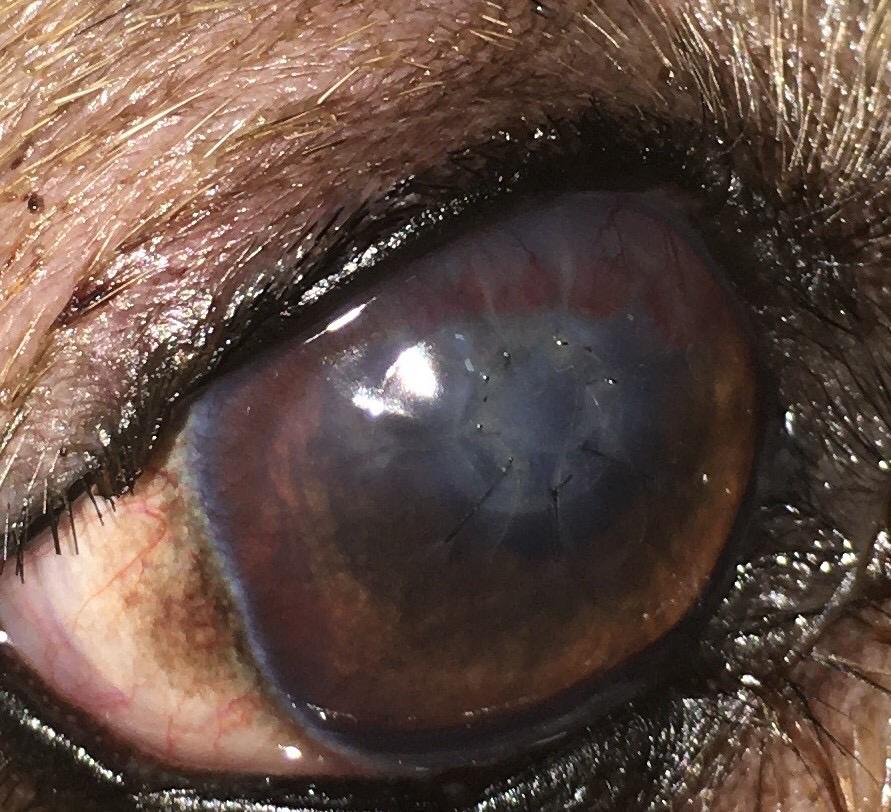Deep anterior lamellar keratoplasty (DALK) as a treatment of a deep stromal ulcer in a dog: case report
DOI:
https://doi.org/10.21708/avb.2020.14.3.9365Resumen
Characterized by the rupture of the corneal epithelium, corneal ulcers threaten ocular integrity, with multifactorial development, such as decreased protection and excessive abrasion applied to the corneal surface. Keratoplasty restores the corneal anatomy, removing the inflamed or infected tissues, in order to promote visual acuity. The technique of deep anterior lamellar keratoplasty (DALK) selectively removes the diseased layers of the cornea, keeping the Descemet membrane and endothelium healthy, reducing the risk of rejection, aimed at tissue recovery. In the present report, a canine, from the Shih Tzu breed, a female, that has not been castrated, 2 years and 6 months old, was treated, she had a history of ocular discomfort and mucous secretion in both eyes. In the ophthalmic examination, keratoconjunctivitis sicca was found in the left eye and ectopic cilia was found in both eyes. With the aid of a fluorescein test, the presence of a deep stromal ulcer affecting the right eye was confirmed. The patient underwent ectopic cilia removal using the wedge resection technique and an allogeneic corneal transplantation using DALK, with only the diseased epithelium and stroma being replaced, reducing the risk of rejection and failures related to surgery. 90 days after the procedure, there was no reaction to the graft, there was complete epithelial repair and maintenance of visual function with slight corneal opacity.
Descargas

Descargas
Publicado
Número
Sección
Licencia
Autores que publicam na Acta Veterinaria Brasilica concordam com os seguintes termos: a) Autores mantém os direitos autorais e concedem à revista o direito de primeira publicação, com o trabalho simultaneamente licenciado sob a Licença Creative Commons Attribution que permite o compartilhamento do trabalho com reconhecimento da autoria e publicação inicial nesta revista. b) Autores têm autorização para assumir contratos adicionais separadamente, para distribuição não-exclusiva da versão do trabalho publicada nesta revista (ex.: publicar em repositório institucional ou como capítulo de livro), com reconhecimento de autoria e publicação inicial nesta revista. c) Autores têm permissão e são estimulados a publicar e distribuir seu trabalho online (ex.: em repositórios institucionais ou na sua página pessoal) a qualquer ponto antes ou durante o processo editorial, já que isso pode gerar alterações produtivas, bem como aumentar o impacto e a citação do trabalho publicado (Veja O Efeito do Acesso Livre).


 Esta obra está licenciada com uma Licença
Esta obra está licenciada com uma Licença 